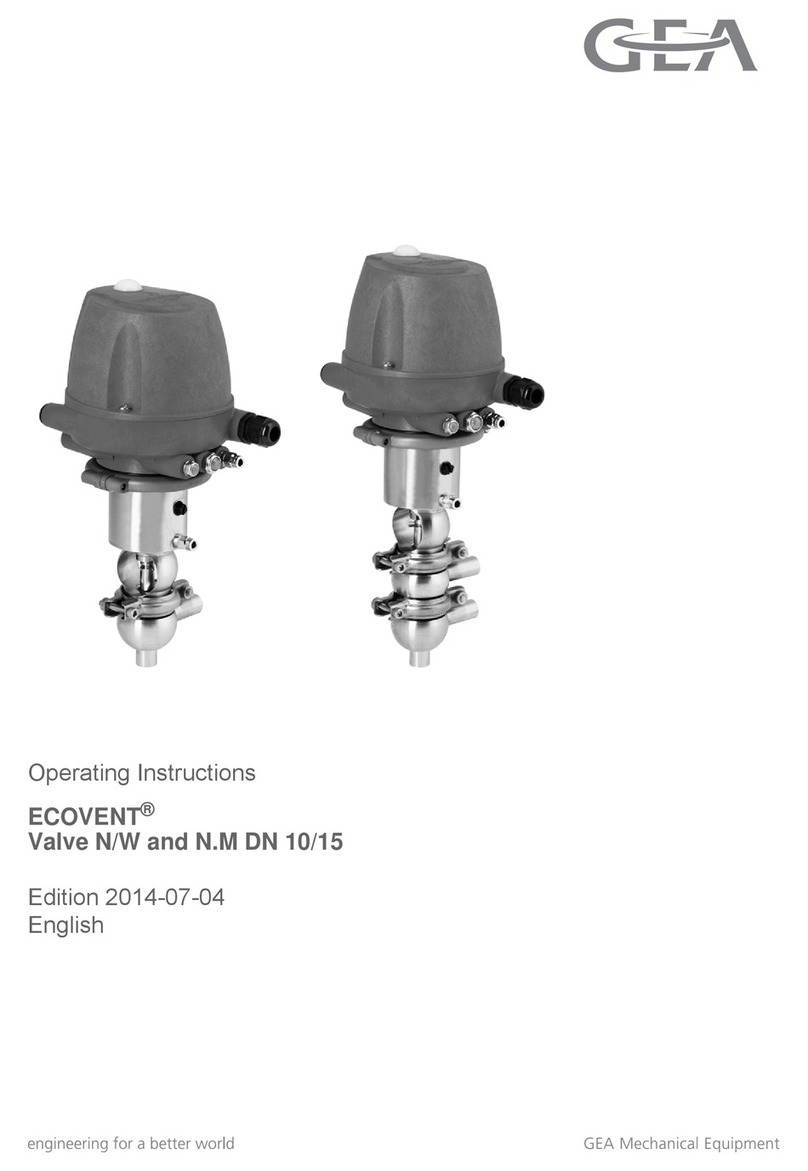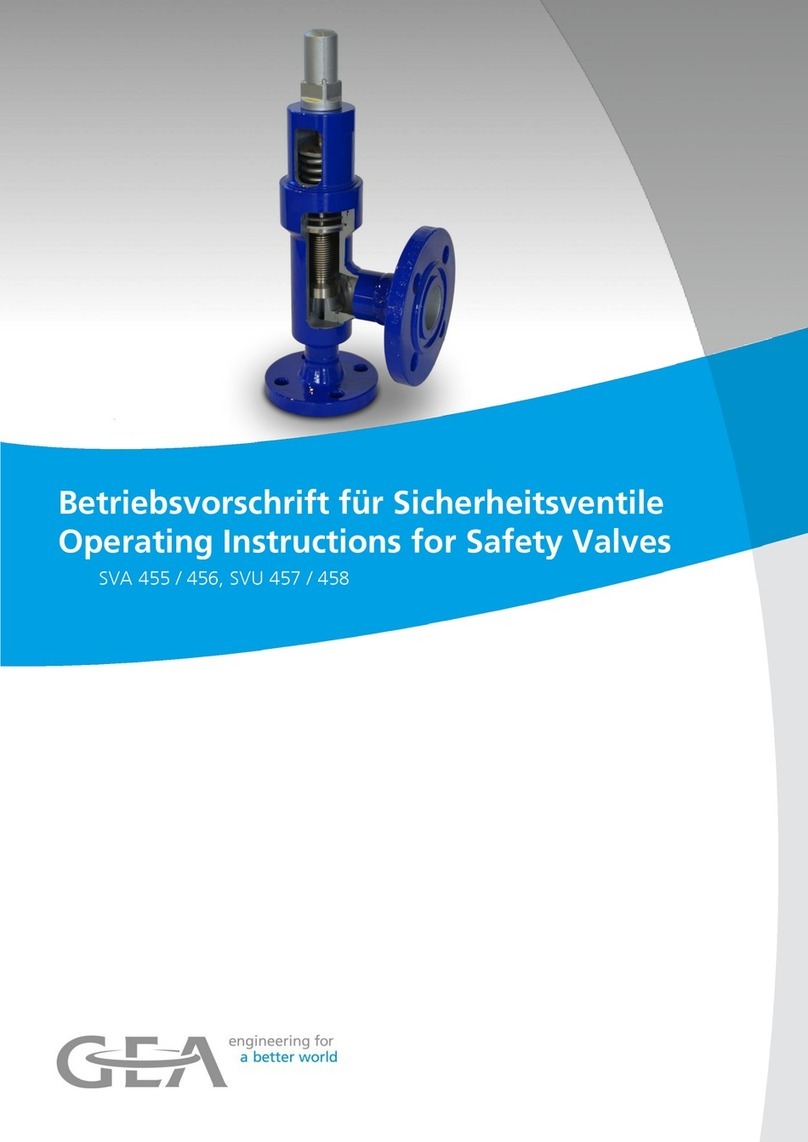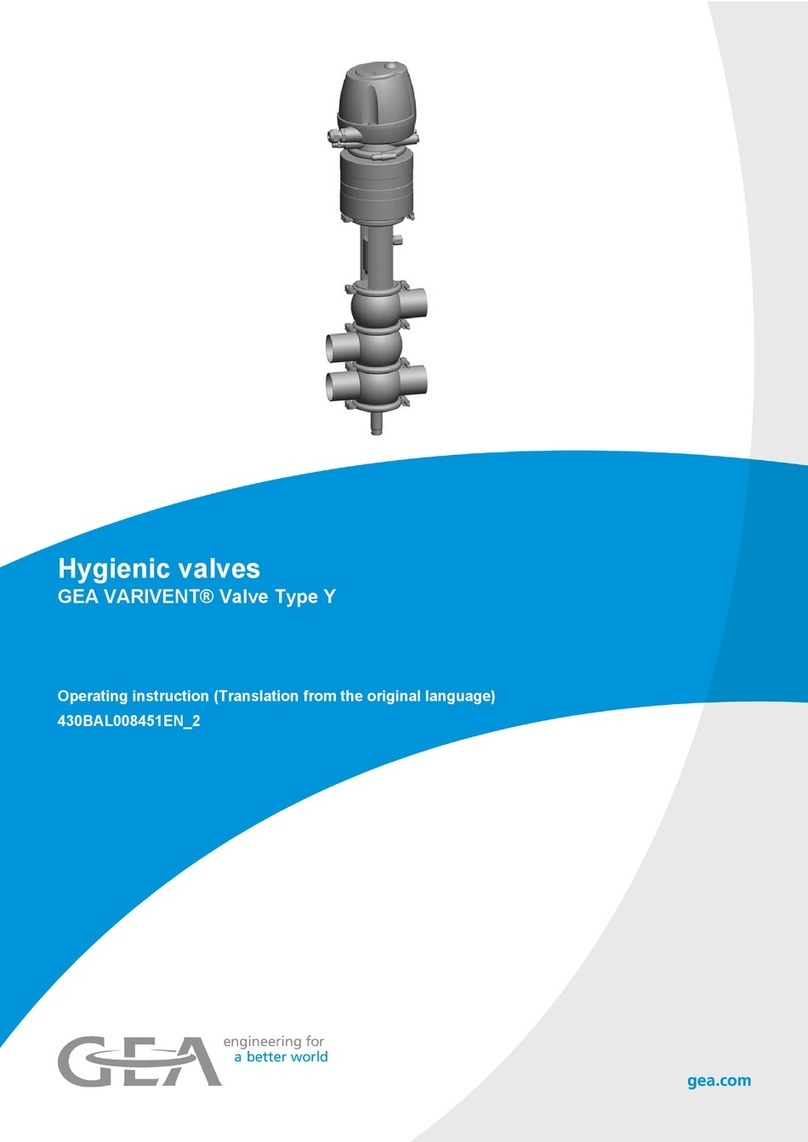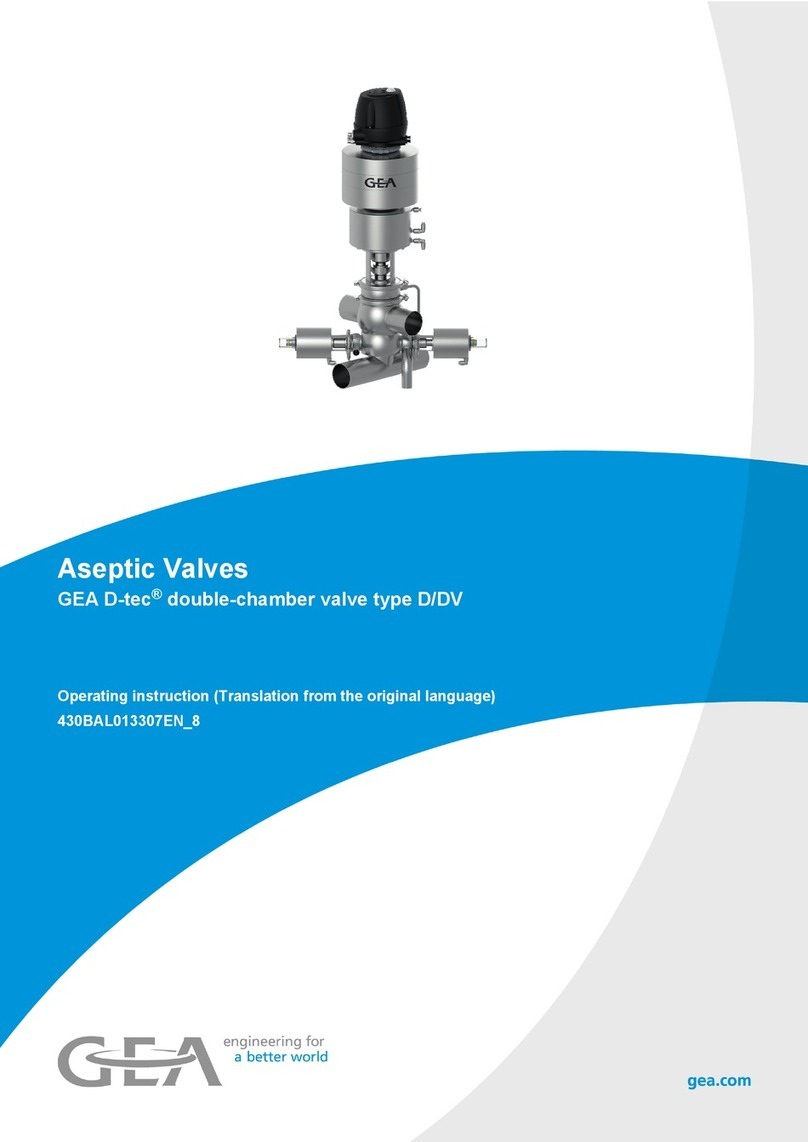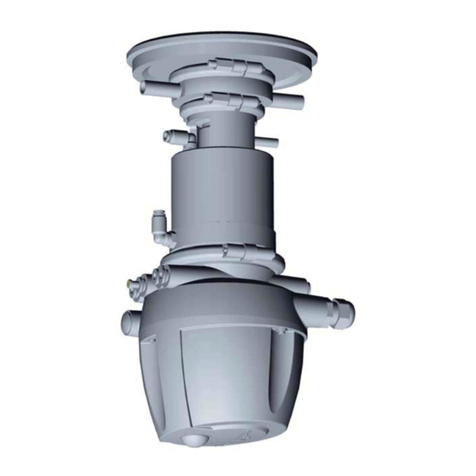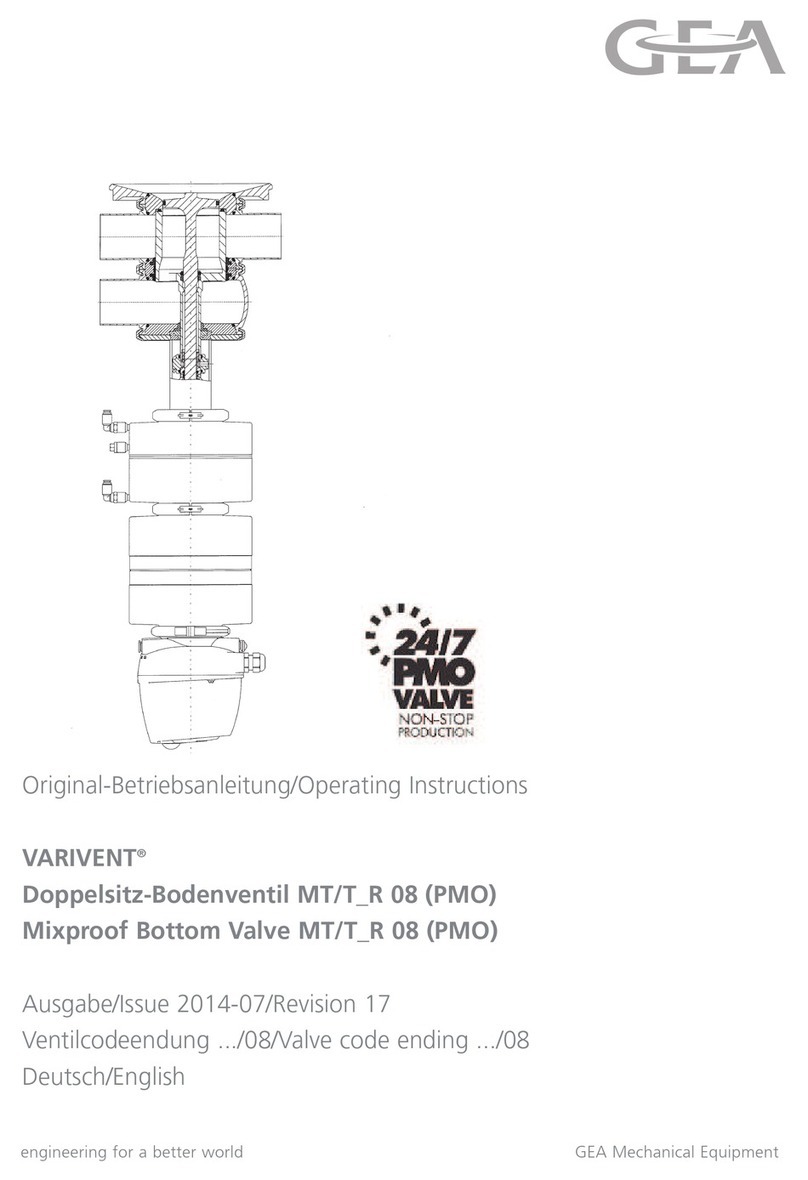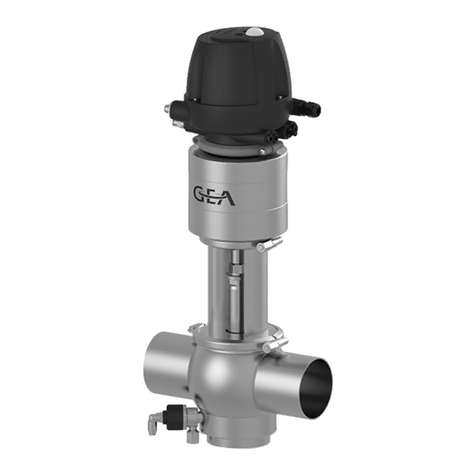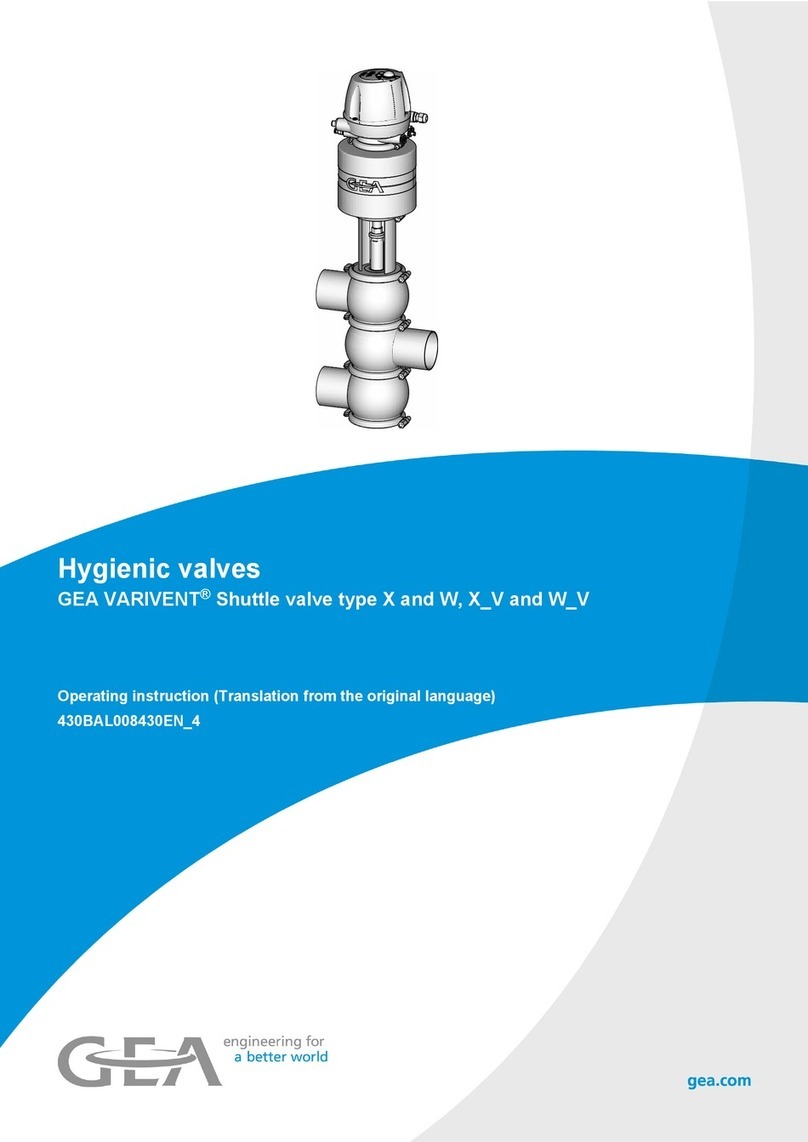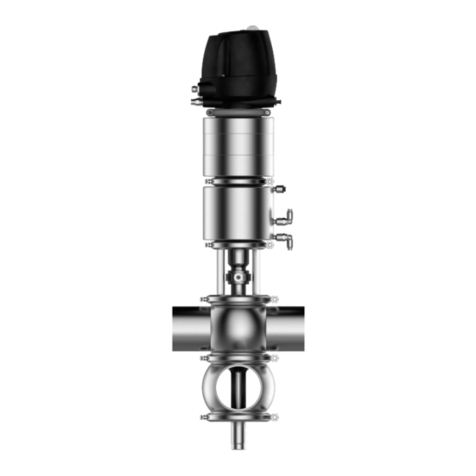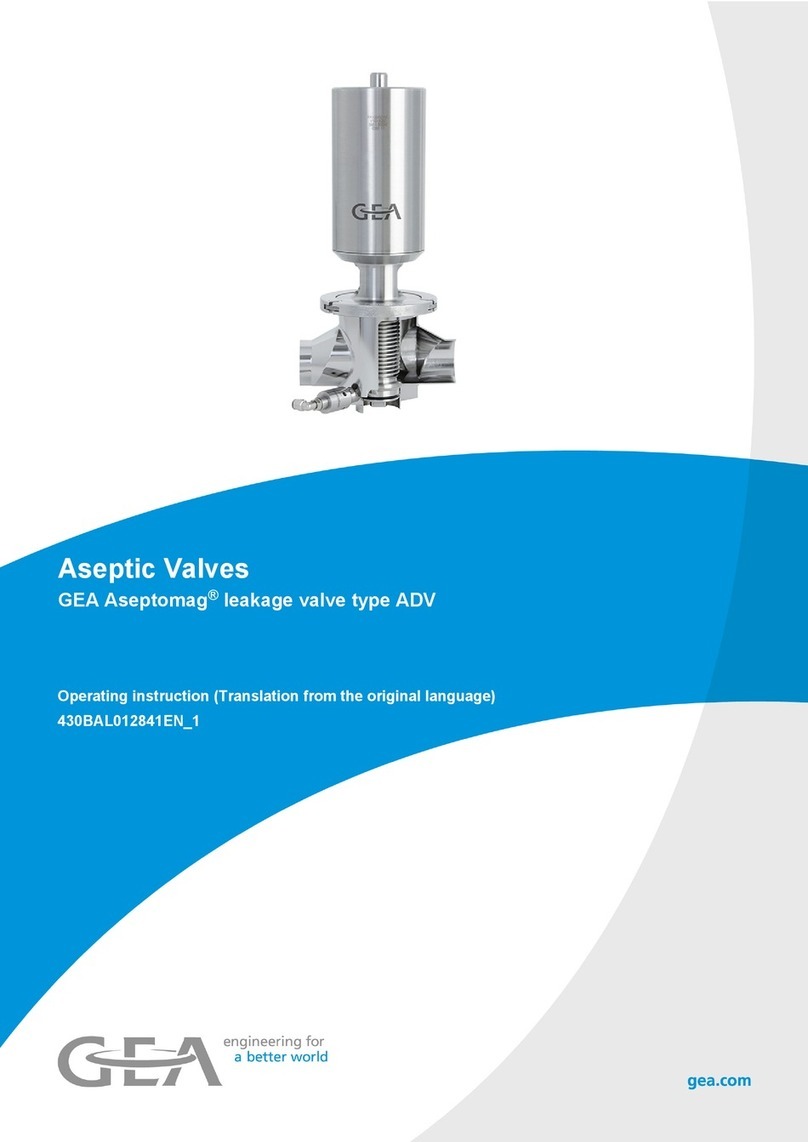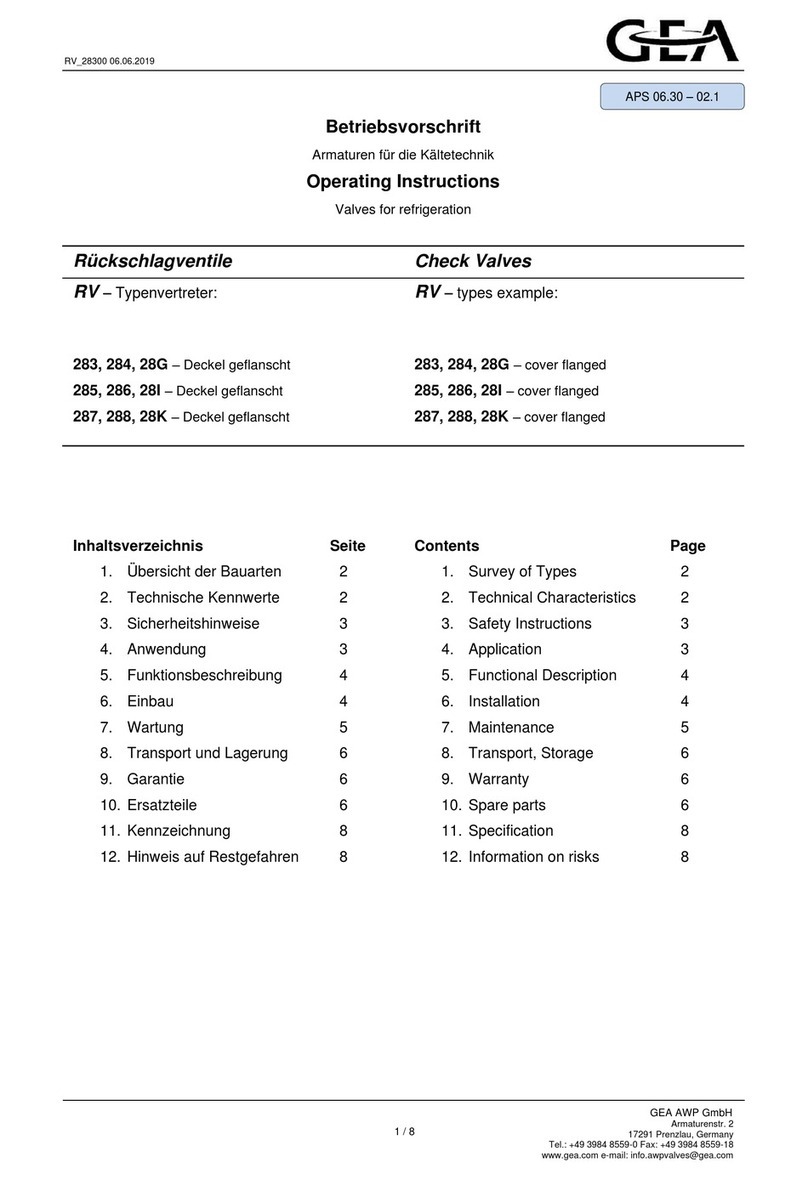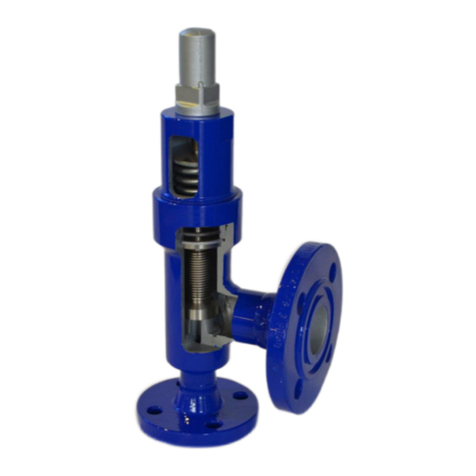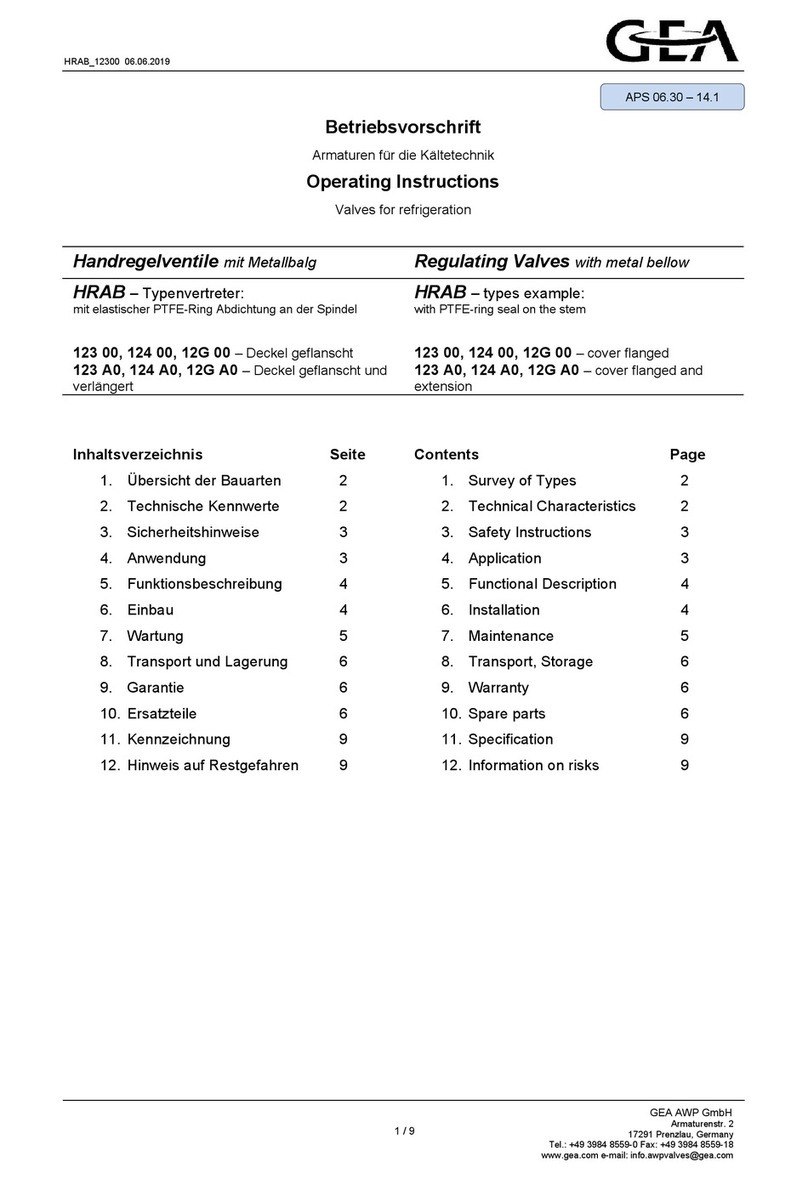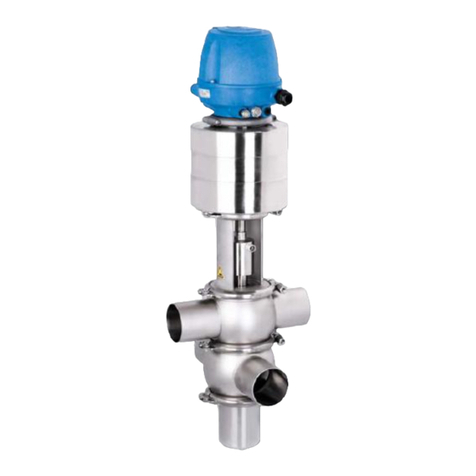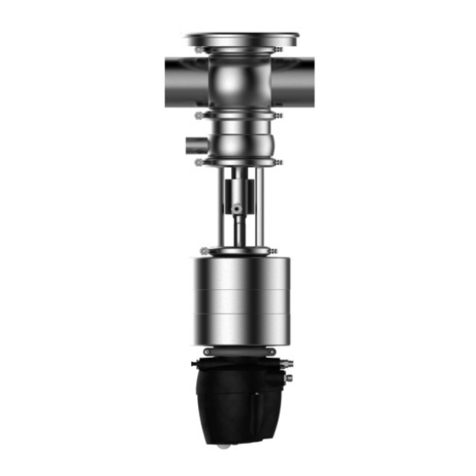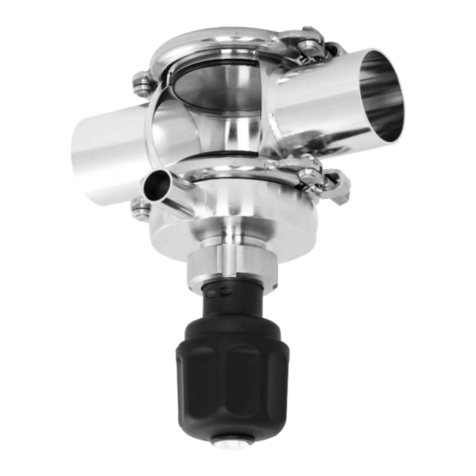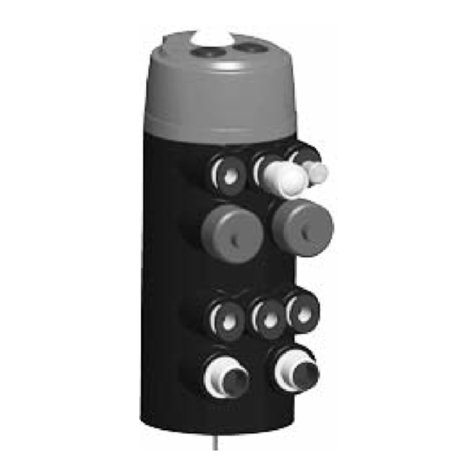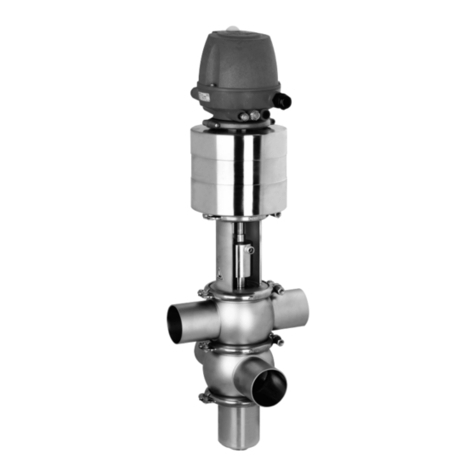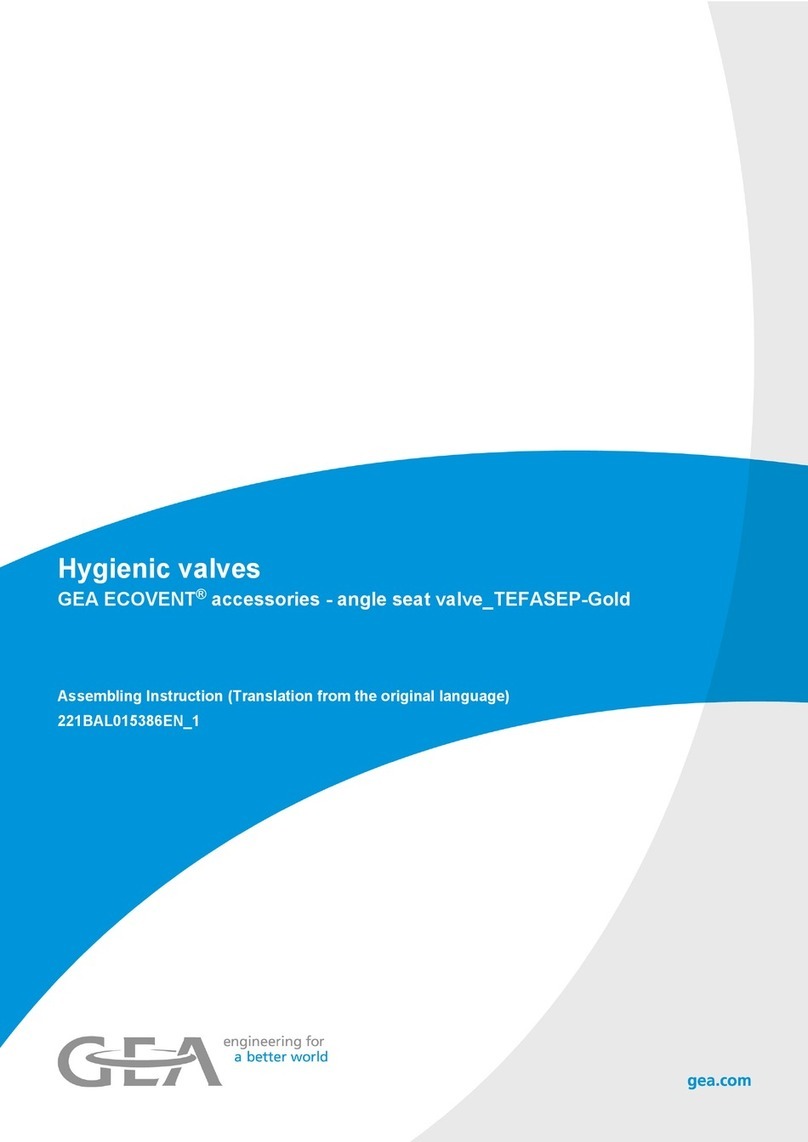Inhalt
Einleitung
Name und Anschrift des Herstellers .................. 2
Identifizierung der GEA Tuchenhagen-Ventile.. 2
Wichtige Abkürzungen und Begriffe .................... 3
Sicherheitshinweise................................................. 5
Bestimmungsgemäße Verwendung .................. 5
Personal................................................................ 5
Umbauten, Ersatzteile, Zubehör ........................ 5
Allgemeine Vorschriften .................................... 5
Kennzeichnung von Sicherheitshinweisen in
der Betriebsanleitung.......................................... 6
Weitere Hinweiszeichen...................................... 6
Besondere Gefahrenstellen ................................ 7
Verwendungszweck ................................................ 8
Transport und Lagerung ........................................ 8
Lieferung prüfen ................................................ 8
Gewichte .............................................................. 9
Transport .............................................................. 9
Lagerung .............................................................. 9
Aufbau.................................................................... 10
Einbau und Betrieb................................................ 10
Einbaulage ........................................................ 11
Ventil mit lösbaren Rohranschlusselementen 12
Ventil mit Schweißstutzen ................................ 12
Pneumatischer Anschluss .................................. 13
Elektrischer Anschluss........................................ 15
Inbetriebnahme ................................................ 15
Störung, Ursache, Abhilfe .................................... 16
Instandhaltung ...................................................... 17
Inspektionen ...................................................... 17
Instandhaltungsintervalle ................................ 17
Vor der Demontage .......................................... 18
Demontage ........................................................ 19
Wartung ............................................................ 22
Montage ............................................................ 23
Technische Daten .................................................. 28
Rohrenden – VARIVENT®-System ...................... 29
Kv+Cv-Werte ...................................................... 30
Beständigkeit der Dichtungswerkstoffe .......... 31
Werkzeug / Schmierstoff .................................. 31
Anhang
Ersatzteillisten
Maßblätter
Einbauerklärung
Contents
Introduction
Manufacturer’s name and address .................... 2
Identification of GEA Tuchenhagen valves ........ 2
Important Abbreviations and terms ...................... 3
Safety instructions .................................................. 5
Designated use .................................................... 5
Personnel.............................................................. 5
Modifications, spare parts, accessories .............. 5
General instructions ............................................ 5
Marking of safety instructions in the
operating manual................................................ 6
Further symbols .................................................. 6
Special hazardous spots ...................................... 7
Designated use ........................................................ 8
Transport and Storage ............................................ 8
Checking the consignment ................................ 8
Weights ................................................................ 9
Transport .............................................................. 9
Storage ................................................................ 9
Design .................................................................... 10
Assembly and Operation ...................................... 10
Installation position .......................................... 11
Valve with detachable housing connections .. 12
Valve with welded connections ........................ 12
Pneumatic connections .................................... 13
Electrical connections ...................................... 15
Commissioning .................................................. 15
Malfunction, Cause, Remedy................................ 16
Maintenance .......................................................... 17
Inspections.......................................................... 17
Maintenance intervals ...................................... 17
Prior to dismantling the valve .......................... 18
Dismantling........................................................ 19
Maintenance ...................................................... 22
Assembly ............................................................ 23
Technical Data........................................................ 28
Pipe ends – VARIVENT®system.......................... 29
Kv+Cv Values ...................................................... 30
Resistance of the Sealing Materials.................. 31
Tools / Lubricant ................................................ 31
Annex
Spare parts lists
Dimension sheets
Declaration of incorporation
2014-03 · VESTA XL Sterilventile · Absperrventil H_A / VESTA XL Sterile Valves · Shut-off valve H_A 1
